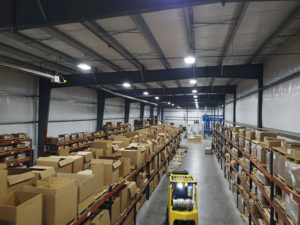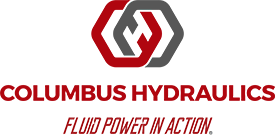
Global shifts have exposed supply chain risk in many industries. How can you make sure you have the hydraulic cylinders you need when you need them?
2020 caught people by surprise when supply chain outages began happening across industries around the country. Over the past few years, we’ve seen changes in import and customs regulations, making manufacturers rethink where their parts are from, and whether the increased risk is worth the cost savings that come from always going with the cheapest supplier.
As director of sales, Chris Nahorny says: “The two bucks or twenty bucks or two hundred bucks you save on a part doesn’t mean very much when you have a $50,000 machine standing there that you can’t sell to anyone because there’s a part missing.”
So what can you do to make sure you aren’t caught by surprise without the right hydraulic cylinder for your production line?
Here are our top 10 tips for making sure you have the parts you need when you need them.
- Have impeccable specifications for your hydraulic cylinders and others parts. If you can hand your supplier precise specifications, you’ll save time in the manufacturing process.
- Keep spare stock, either at your facility or with the manufacturer. Columbus Hydraulics keeps spare stock for its customers and finding other manufacturers in different industries that do this is not common.
- Use stock agreements to encourage your suppliers to hold that stock for you if you don’t want to hold it yourself. A stock agreement means that you promise to purchase the stock over six months or a year, so the supplier isn’t taking a risk for custom parts. The supplier can then produce extras and keep your next one or two shipments in their warehouse, so they’re ready to go when you need them.
- Make sure you use suppliers who have taken these same precautions in getting their parts and materials. Find out about the supply chain down the line. Are you working with a supplier who might run out of steel? Find out what your supplier is doing to make sure they don’t get stuck with low production capacity down the line.
- Implement inventory management systems that work properly. Often, we have customers telling us they thought they had another box on the shelf when they didn’t. If this happens to you more than once a year, it’s time to upgrade your inventory systems so you actually control what’s in stock. Maybe we can bail you out quickly with your custom hydraulic cylinders, but not all of your suppliers will be able to do that if you keep having inventory control issues. Hopefully, your problem is just the IT systems and not slippage, which you’ll also have to manage if that’s a problem at your plant.
- Choose local or US-based suppliers to avoid tariffs and customs changes. The global environment is more uncertain than ever. In 2020, we saw companies such as General Motors closing down plants because of global semiconductor supply chain problems. We saw countries blocking shipments of certain types of products to make sure they supply their own populations first. While this has mostly been limited to medical supplies, the precedent has been set and it’s worth thinking about buying American not just because it’s patriotic—but mainly because it lowers your supply chain risk.
- Work with a company that is stable and strong. At Columbus Hydraulics, we are able to store inventory for a lot of our customers because we have the financial stability and the extra warehousing facilities that allow us to do that. We recently built a new facility here in Columbus, Nebraska, to take care of our customers and make sure that we can keep some extra stock for them. There is of course some risk associated with stocking parts for our customers—even with a stocking agreement. However, as a strong company, we are able to share some risks with our customers.
- Level loading makes sense for companies with a seasonal surge in demand. Many of our customers work in agriculture, so there’s a predictable boom in demand every spring. Spreading out the manufacturing process over the year avoids the rush in the spring. This will require you to maintain a storage facility for the machines that you’re holding for the peak demand, but it ensures that you are prepared for the seasonal demand. You can find storage facilities in lower-cost locations so that you can reduce the cost of holding the equipment in stock.
- Work with suppliers who are a good fit for your needs. Manufacturers that do high-quantity runs are fine for very standard parts. However, if you have any custom parts or low-quantity part needs, you need to work with a manufacturer that has short run times. At Columbus, we can usually fit an emergency order into the production line within a week or two. Large-scale manufacturers won’t be able to fit you into the production line in a pinch, so make sure to consider the needs for each type of part and whether your supplier is the right one based on your needs for that specific item.
- For some items, you may want to have multiple suppliers. If you can’t find a supplier that will sign a stocking agreement with you, or if you are using an overseas supplier, you may want to have a backup supplier as well.
As business is ramping up in many sectors, taking these precautions will help you get your hydraulic cylinders in a hurry. In the Custom Hydraulic Cylinders: How to Get Them Fast blog, we’ve covered the reasons why Columbus Hydraulics is able to produce your cylinders in weeks rather than months. Best of all, the steps we’ve listed above are relevant for any part you’re ordering from any supplier. By taking these steps, you’ll avert emergencies not just when it comes to hydraulic cylinders, but across your entire line of parts.


